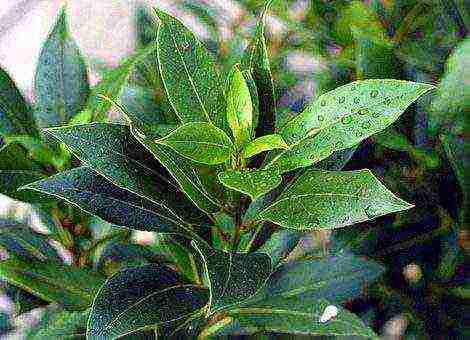Content
A long liana, with carved leaves and hanging, huge, by household standards, fruits - this is how a watermelon can look at home. It is usually grown in summer, when there is plenty of light and warmth. And today, growing a watermelon at home on a windowsill is not at all a fantasy, because with proper care you can get a decent harvest. How to grow a watermelon at home - read the article.
Conditions for growing watermelon
How the watermelon will grow and whether it will give edible fruits depends on the choice of soil, top dressing, watering, the temperature and light regime and the choice of location.
A place
It is preferable to grow watermelon on the south side. The more sun the better. Direct sunlight is only good for him.
An ideal place at home would be a warm, sunny loggia or balcony. You can plant plants on the southern, western and eastern windows, the northern ones are absolutely not suitable for them.
In fact, growing a watermelon on a balcony is not so difficult, you just need to comply with the necessary conditions.
back to contents ↑ Light
Daylight hours for successful cultivation of watermelon is 12-14 hours. In the evenings, they turn on LED, fluorescent lighting or phytolamps. On cloudy days, the lamps are left on for the whole day.
Temperature
Watermelons are grown at high temperatures of 25-30 ° C during the day and at least 18 ° C at night. It is especially necessary to monitor the thermometer during the formation of the ovary.
Watering
Plant breeders' opinions on watering differ greatly. Some prefer regular, and even plentiful watering, others talk about its strong limitation and its complete cessation during ripening, arguing that water is not needed to increase the sugar content. In any case, the seedlings are watered in the usual way, and the watering of the plant in the second stage of its life depends on a number of conditions, including experience.
to the content ↑ Soil and plant fertilizers
The soil is prepared loose and fertile with a neutral reaction: 1 part of sod land, sand, humus, plus one tenth of ground wood ash. For disinfection, the soil is steamed in a water bath for 1.5-2 hours, kept in a microwave oven for 10-20 minutes, spilled with boiling water.
Top dressing begins when the plant has 3 true leaves. Plants are watered with water, and then with complex mineral fertilizers (Kemira, etc.), diluted according to the instructions. The ratio of nitrogen, phosphorus and potassium in them at this stage may well be shifted towards nitrogen, but it is better that they are equal. At the stage of ovary formation, they are fed again - there should be more phosphorus and potassium fertilizers. After 2-3 weeks - the third time.
back to content ↑ Planting watermelon seeds
Not all outdoor watermelons are suitable for home cultivation. There are varieties that bear fruit indoors, such as Ogonyok, Crimson Sweet, Ultra Early, Sugar baby, Sibiryak, Gift of the Sun, Kai F1, Cinderella, Gift to the North F1. They have good taste, do not need abundant light, early ripening, disease resistant.
The seeds of these varieties are distinguished by good germination and if they are purchased from trusted suppliers and the brand is reliable, then almost everything germinates. Before planting, they are kept for 10-15 minutes in a weak solution of potassium permanganate at a temperature of 50-55 ° C. Then placed in a damp cloth (sand, etc.)until they bite, after that they are planted in 2 cups for seedlings, burying 2 cm in the ground.It can be planted immediately in cups.
An interesting, but optional, technique of stratification when germinating seeds in a humid environment, stimulates the processes in the seed: they are kept for 12 hours on the lower shelf of the refrigerator at a temperature of + 6 ° C, then another 12 hours at room temperature. The process is repeated 2-3 times.
back to content ↑ Growing watermelon seedlings
2 weeks after the emergence of shoots, weak seedlings are discarded and left in each glass, one of the strongest.
It is undesirable to plant watermelon seeds right away in large containers: a large mass of undeveloped soil easily sour, and the seedlings may die. They are transplanted after a month, the plants are moved to a permanent place along with a lump of earth, so as not to injure the roots.
Seedlings can be planted in open ground and get a good harvest in the garden. Pre-hardening: during the week, take out the seedlings for a short time every day in the open air.
back to content ↑ The process of growing watermelon
After transferring the seedlings into pots, the root begins to grow rapidly. It grows long, with well-developed lateral roots, so large containers are selected - 5-15 liters.
The pinching is carried out over 3-4 leaves, the lateral branches are directed vertically or allowed horizontally. It is also grown in one lash, in this case flowers and fruits will appear faster.
Flowering (after 30-50 days) and fruiting of watermelon depends on the variety, which are early ripening, mid-ripening and late-ripening. It is interesting that, depending on the timing of flowering, flowers appear in different leaf axils: in early maturing - in 4-11 leaf axils, with an average period - at 15-18, late - at 20-25. Any variety can be grown in the house, but given the thermophilicity and photophilousness, they give preference to early varieties.
To obtain fruit, the flowers are artificially pollinated. Watermelon has 2 types of flowers - male and female, which appear on both the main and lateral shoots. Male flowers (developed stamens, thin peduncle) pollinate female flowers (developed pistil, thick peduncle) and await fruit setting. The enlargement of the stalk of the female flower means that the little watermelon has begun to grow. With the vertical arrangement of the lashes, it becomes necessary to attach it to prevent breakage.
Do not leave more than 2 watermelons on the branches in the house if you want to enjoy the delicious pulp. The shoots are pinched after the formation of the fruit so that the forces go to its ripening, and not to growth.
From planting to the end of the growing season, an average of 3 months pass. It is difficult to grow a fruit over 1 kg at home. Wait until the watermelon ripens and it may taste better than the purchased ones. Recall that in a mature fruit, the bark is glossy, the stalk is dry, without hairs. when knocking, a ringing sound is heard.
But, even following all the rules of care, there is no guarantee that you can get a large-sized watermelon on a windowsill or balcony. And yet, growing such an exotic plant will bring a lot of pleasure and new skills in growing unique plants at home.
Similar articles:

Probably, you rarely meet a person who would not like watermelons. However, not all of us have a plot to grow our favorite fruits and vegetables. This is the main reason people are wondering how to grow a watermelon at home.
Not everyone knows, but you can grow watermelons without using seedlings, but immediately in a permanent place. As a rule, seedlings are used in order to subsequently transplant plants into a greenhouse. This is done so that the berry has time to ripen. And if we are talking about growing fruit at home, then this stage can be safely skipped.
Basic steps to grow the most delicious watermelon on the planet
You should start by buying a large enough capacity, because the watermelon has a branched root system. A 50x50x30 cm box is perfect for this. You can make it yourself, for example, from wooden boards. If this is not possible, then you can always take a basin or bucket. If the selected container is transparent, then it makes sense to wrap it with a dark cloth. Such a measure is necessary so that the roots do not dry out and turn green. The container must be filled with fertile soil with trace elements.
You can buy it at any garden or hardware store. Fortunately, nowadays, even in some supermarkets you can find similar goods, if, of course, there is a garden department there. Thirty days before you plan to plant a watermelon, you will need to lime the soil. This is necessary so that the acidity is about 6 pH.
Before planting the seeds, they must be soaked for about ten minutes in water with a temperature of more than 100C. You need to keep it until the seeds begin to peck, after which they can be planted. Please note that in no case should you separate the seeds.
How many seeds to plant?
You don't need much, because they can all ascend. But three seeds will be the best option. It should be planted to a depth of about three centimeters. After the sprouts appear, you need to choose the strongest one and leave it.
Placing a plant
The best place is by the window
There is no better place than a windowsill. You can, of course, just put it near the window, but at the same time the plant should receive a sufficient amount of light. However, do not forget that the frame must not be left open, otherwise there is a risk of freezing the thermophilic plant. The best temperature for ripening is between +25 and +30 degrees. Until the fruit is formed, the plant will be considered a seedling. At night, the optimum temperature will be about +18 degrees. When you notice that the fruit begins to set, you should not drop the room temperature drastically. Leave it also at least +25 degrees. In addition, it should be remembered that moisture is destructive for watermelons. It must be remembered that watering should be moderate, do not overfill.
Harvesting in three months
Typically, if watermelons are grown in a greenhouse, it takes about three months. If we are talking about growing a watermelon at home, then most likely it will take a little longer. If we are talking about growing at a time of year when the daylight hours are less than twelve hours, then fluorescent lamps should be used. This is necessary to highlight the watermelon. Try to keep your lighting clearly directed. Let it illuminate the plant as much as possible. In addition, special reflective surfaces should be used. Moreover, you should place them around the watermelon.
Vitamins and minerals for the plant
Like any other living creature, a watermelon needs feeding. Try to do this according to a certain pattern. The most common method is primary feeding with phosphorus and nitrogen. Moreover, this is done in equal quantities. After you see that the fruits are tied, you should think about using top dressing, where there is a large amount of potassium. And at this moment it is necessary to ensure that there is not as much nitrogen in the feeding as in the initial stage.
It makes sense to install a support in the container with which you can fix the shoots of your watermelon. The most important stem is usually attached at a height of about one hundred centimeters. Lateral shoots are attached in a slightly different way: they are attached so that several leaves remain above the flower with an ovary.
After you notice that the fruits have formed, you do not need to leave everything.Two is enough, all the rest need to be pinched off, because there will be no point in them. They will only take away all the juices and nutrients. If you leave more than two fruits, then they will all remain small. When you see that the fruit has reached a size of about ten centimeters in diameter, then it must be placed in cheesecloth or mesh, after which it should be tied to a support. This is done to make it more durable.
By the way, when you grow a watermelon at home, you should remember that it will not reach such a huge size as in a greenhouse planting. However, thinner skin will be a big advantage. Usually, growing a watermelon at home, you can get a fruit weighing about a kilogram.
If you do not know which variety should be preferred, then stop at the seeds of such varieties as "Kaho," Ogonyok "or" Sibiryak ". These varieties are the most unpretentious for growing at home.
If the first time you fail to grow the watermelon that you wanted, or it doesn’t work at all, then you should not be very upset. Try again, just on the next landing you will need to take into account the mistakes made and not repeat them again. Juicy and sweet watermelons for you!
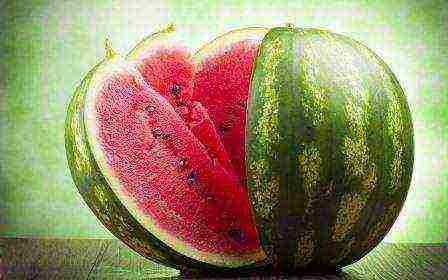 Thanks to modern technologies, growing berries and vegetables is no longer a fantasy. To understand how to grow a watermelon at home, you need to familiarize yourself in advance with some of the nuances that will allow you to collect an ecological and tasty harvest over time.
Thanks to modern technologies, growing berries and vegetables is no longer a fantasy. To understand how to grow a watermelon at home, you need to familiarize yourself in advance with some of the nuances that will allow you to collect an ecological and tasty harvest over time.
How to choose and plant seeds
First of all, you need to choose a material for planting.Not every variety of watermelon can be grown at home.The seeds of the delicious watermelon from the market or store are not suitable for this purpose, because this variety is grown in open areas in spring and summer. For the same reasons, varieties that are grown in summer cottages will not yet be suitable.
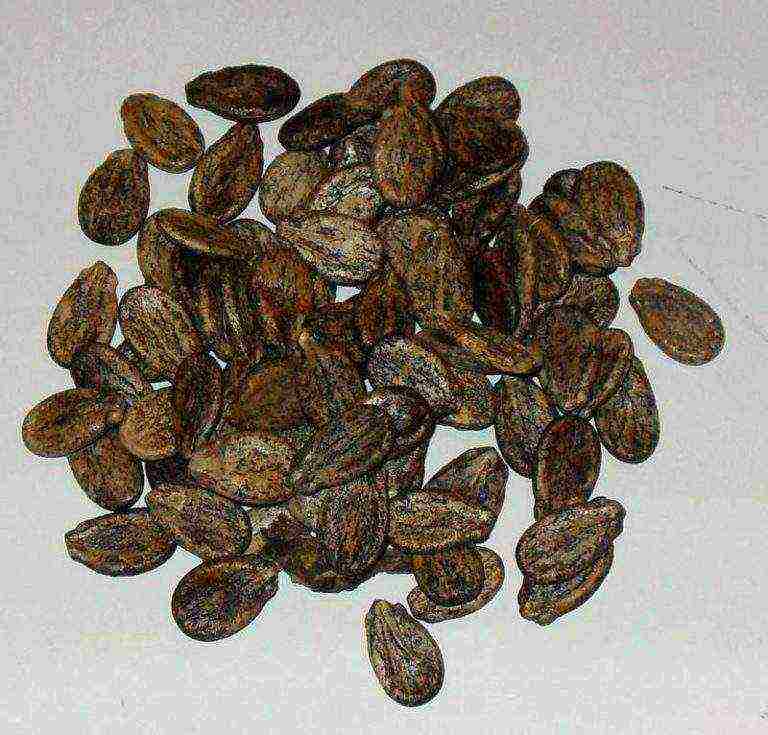
But there are hybrids that are resistant to lack of light, early maturing, they do not require special care. The following varieties are considered excellent: Ogonyok, Kaho, Sibiryak, Volgar, Gift of the Sun. They sprout very well, are tenacious, the fruits have a sweet taste.
After the acquisition, the planting material must be selected before growing the watermelon at home. Small and damaged seeds are eliminated immediately. Large seeds are dipped into a glass container containing a solution of sodium chloride. It is done like this: 5 g of salt per 0.1 l of water. Seeds that have sunk to the bottom must be removed, rinsed in water, and dried. It is these seeds that are needed for planting.

Then they are soaked in a solution of humate (0.5 g per 1 liter of water). This is done as follows: gauze is moistened, in which the seeds are left for a day. This will increase germination and reduce stress. You can also leave the seeds in a gauze moistened with plain water until they begin to hatch.
Then the seeds need to be planted in small plastic cups of 4-5 seeds each, the earth should be a little tamped in them.
Watering should be done in such a way that the soil is always moist. For seedlings to appear, the temperature must be about 25 ° C. Then the seedlings will appear after 1 week. If the temperature is below 13 ° C, then seedlings can not wait.
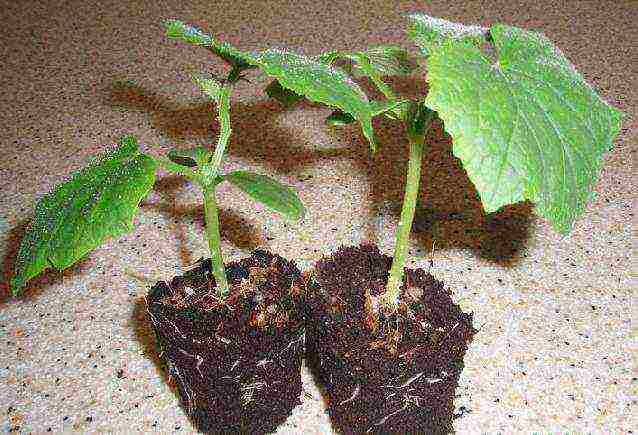
Cups should be in a well-lit and warm place. No need to allow drafts. After 2-3 weeks, 1 seedling should be left in each glass.
Watermelon care
As soon as 3 leaves appear, the plants are moved into containers, the volume of which is from 5 to 15 liters. They should contain a mixture of seedling soil and perlite in a 2: 1 ratio. It is necessary to water the plant often, but not abundantly, so that the water does not stagnate. The soil must be fertilized every 2 weeks. Liquid vegetable fertilizers work well here. You need to add 1 tsp in 1 liter of water. fertilizers. This solution can only be used for 1 watering.

When 6 leaves grow, the plant is pinched over 4 leaves. The plant needs enough light. If there is not enough lighting, then additional LED or energy-saving lamps will be required.
Pollination of the plant and the appearance of fruits
In most cases, watermelons begin to bloom 30-50 days after germination.
To obtain an ovary, flowers require pollination.
To do this, you first need to find male flowers that have a thin stalk. Such flowers will need to be carefully picked, they need to pollinate female flowers by touching the stamens to the pistils.
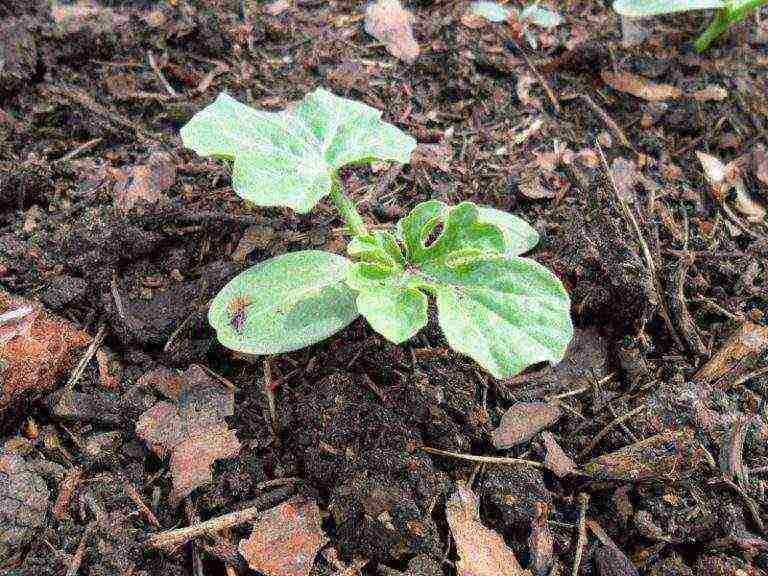
After a certain period of time, there will be noticeable wilting of the petals and an increase in the stalk, which over time will become a fruit. As the lashes grow, they will need to be pinched to stop their growth.
A few weeks before the fruit is fully ripe, watering should be minimized, stimulating the appearance of sugar in the berry. When the grown fruits are ripe, you can harvest.
How to grow watermelons in the country (video)
About the beneficial properties of watermelon
This berry contains a lot of sugar (about 12%). It is easily absorbed by the body and, unlike refined sugar, is beneficial.

Watermelon juice has a diuretic effect, so it is able to flush the kidneys and ureters well. Thanks to him, salts are dissolved and washed out of the body. Watermelon juice is considered beneficial for people with kidney disease. Watermelon juice is also useful for people who have diabetes mellitus, cystitis, atherosclerosis.
Now you know about growing watermelon at home. We wish you a good harvest!
We plant watermelon seedlings in open ground (video)
Gallery: watermelon at home (15 photos)
Rate the article:
(2 votes, average: 3 out of 5)
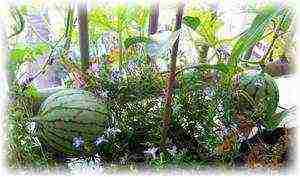 Increasingly, field and garden crops are settling at home on window sills and balconies, because you really want to grow your favorite fruit, vegetable or berry on your own. Already no one is surprised by the desire to grow peppers, tomatoes, cucumbers, strawberries and spicy-aromatic crops in an apartment, but you don't often come across a watermelon. However, it is quite possible to grow this giant berry at home from the bone. Moreover, the taste of such a watermelon can be at its best, although you should not expect a large size, because even with good feeding, it is unrealistic to provide the required amount of nutrients.
Increasingly, field and garden crops are settling at home on window sills and balconies, because you really want to grow your favorite fruit, vegetable or berry on your own. Already no one is surprised by the desire to grow peppers, tomatoes, cucumbers, strawberries and spicy-aromatic crops in an apartment, but you don't often come across a watermelon. However, it is quite possible to grow this giant berry at home from the bone. Moreover, the taste of such a watermelon can be at its best, although you should not expect a large size, because even with good feeding, it is unrealistic to provide the required amount of nutrients.
Selecting a variety and sowing seeds
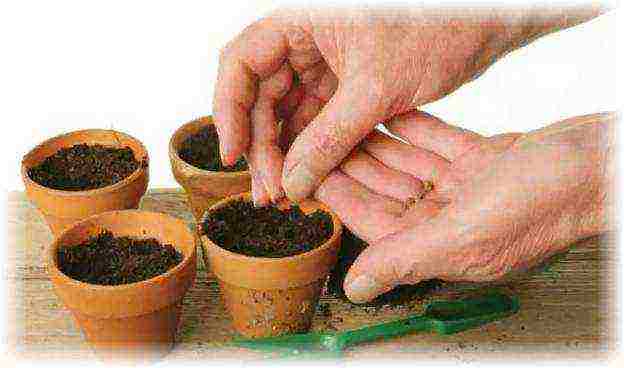
It is customary to grow watermelon from seed as an annual crop with a short growing season. If you plan to grow a watermelon at home, then special attention should be paid to the choice of a variety, taking into account the peculiarities of indoor cultivation.
Watermelon is a thermophilic and light-loving culture. If it is easy to provide a high temperature in the house, then a sufficient level of lighting, especially if it is grown in the autumn-winter period, becomes a significant problem. Therefore, when choosing a variety, special attention should be paid to varieties and hybrids that are resistant to low light levels. In addition, you need to pay attention to the timing of ripening. It is best to grow early varieties at home, in which the first fruits can be tasted within 3 months.
Advice! In winter, a watermelon will feel quite well on the windowsill near the central heating batteries, especially since low air humidity has a positive effect on growth.
The following varieties and hybrids are best grown on a windowsill or loggia:
- Volgar;
- A gift to the sun;
- Light;
- Rose of the Southeast;
- Siberian;
- Stokes.
For sowing, it is necessary to select large bones without visible damage. All small and underdeveloped bones are best removed immediately. Selected seeds should be soaked in 5% sodium chloride solution to separate empty seeds. After that, be sure to rinse the seeds, dry them slightly and use for sowing. After good seeds are selected, it is worth thinking about how to grow a full-fledged watermelon at home from a stone.
Features of home care
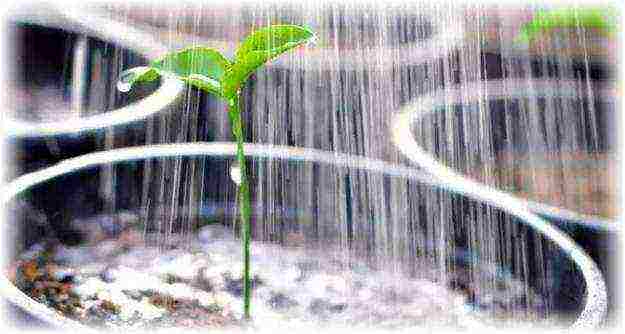 A characteristic feature of the watermelon is its rapid growth and a strong, well-developed root system. Within 1-1.5 months, the seed will turn into a flowering plant. To build up such a vegetative mass requires a large amount of nutrients. At home, it is almost impossible to fully meet all the needs of the plant, but in order to facilitate the task when choosing a container for planting, preference should be given to a spacious and capacious container.
A characteristic feature of the watermelon is its rapid growth and a strong, well-developed root system. Within 1-1.5 months, the seed will turn into a flowering plant. To build up such a vegetative mass requires a large amount of nutrients. At home, it is almost impossible to fully meet all the needs of the plant, but in order to facilitate the task when choosing a container for planting, preference should be given to a spacious and capacious container.
Growing watermelon seedlings at home is not much different from other pumpkin crops. You can sow seeds in small pots or cassettes for seedlings of several pieces, and after the appearance of the first real leaves, remove weaker plants. A strong seedling must be transplanted into a bucket or other container with a volume of at least 10 liters with a nutritious loose substrate. Watering should be done in moderation, but often. Several times a month, it is recommended to carry out fertilizing with fertilizers along with watering or immediately after it on wet soil.
Advice! In order not to mess with the seedling cassettes, you can immediately plant the seeds in a suitable container, but at first, until the root system masters the earthen ball, you need to carefully monitor the watering.
Light is an important factor in the successful cultivation of watermelon. Daylight hours should be at least 12 hours a day with a sufficiently high intensity so that the grown watermelon can accumulate enough sugars. It is best to place the pot of watermelon on a south window, but even with this location, you should not rely on sunlight alone, especially when grown in the fall / winter or early spring. At this time, not only short daylight hours, but also a large number of cloudy days. Therefore, it recommends providing the plant with additional lighting with fluorescent lamps.
Plants with six true leaves can be pinched to stimulate branching of the main stem. It is necessary to provide support for the whips, and prepare nets for future berries, in which they can be suspended from the trellis, but which will not interfere with the pouring of the fruit. If the space is limited, it is worth periodically pinching the lateral shoots to give the plant a compact shape.
Flowering and fruit formation
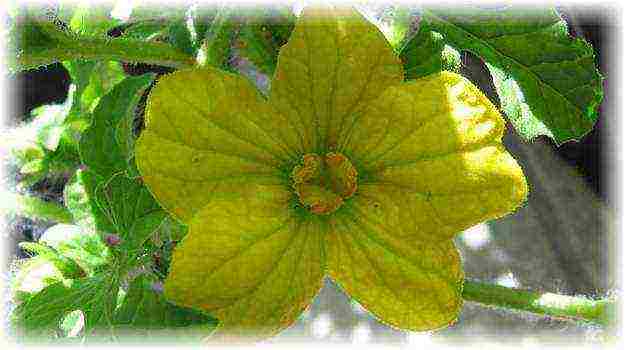 Long, well-developed lashes are not yet a guarantee of a good harvest. In most cases, it is impossible to grow a watermelon at home without artificial pollination. On the lashes, 2 types of flowers are formed - male and female. The latter can be distinguished by a rounded stalk, which, after pollination, grows into a berry. In the field, bees are involved in the transfer of pollen from male flowers to female flowers. In indoor conditions, where the occasional bee is rare, you will have to transfer pollen with a brush or simply pick a male flower and attach it to the stigma of a female flower.
Long, well-developed lashes are not yet a guarantee of a good harvest. In most cases, it is impossible to grow a watermelon at home without artificial pollination. On the lashes, 2 types of flowers are formed - male and female. The latter can be distinguished by a rounded stalk, which, after pollination, grows into a berry. In the field, bees are involved in the transfer of pollen from male flowers to female flowers. In indoor conditions, where the occasional bee is rare, you will have to transfer pollen with a brush or simply pick a male flower and attach it to the stigma of a female flower.
Watermelons grown in indoor conditions rarely exceed 600-800 g, but this does not detract from the merits of the berry. With a good level of lighting, such a fruit will be no less sweet than that brought from the southern regions, and in winter it will become a real exotic, designed to give bright and sweet memories of summer.


